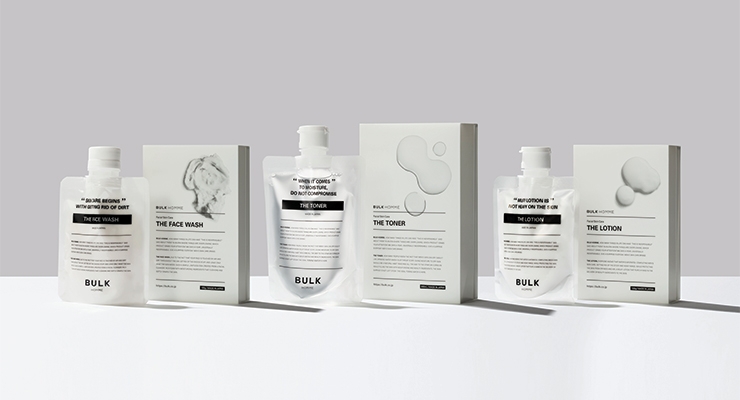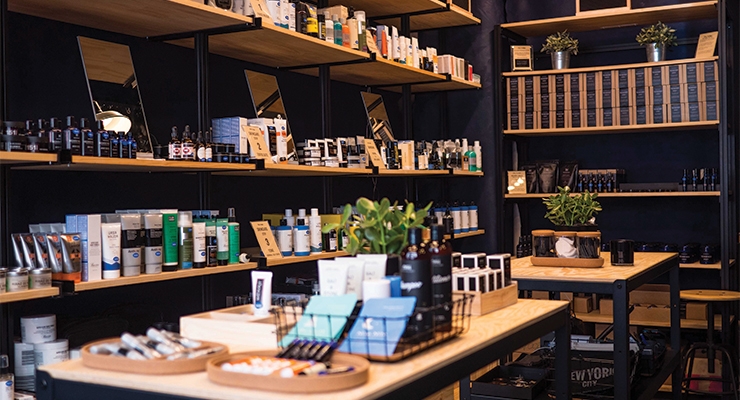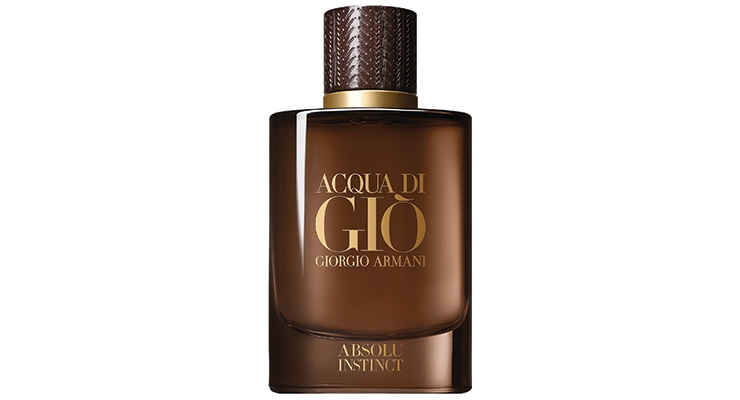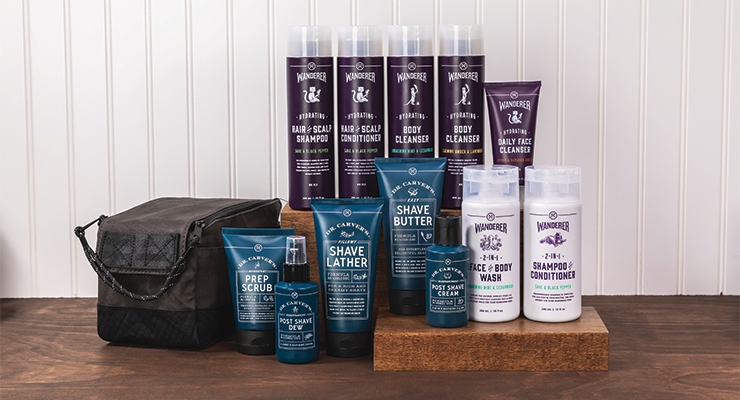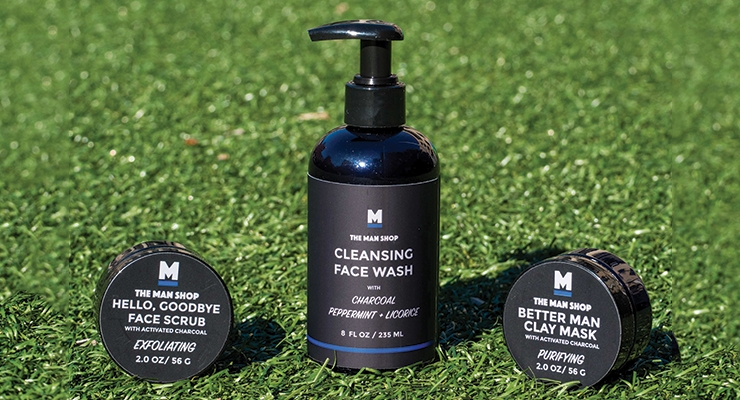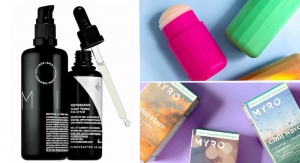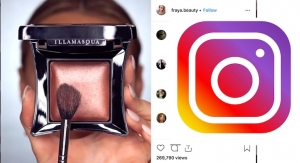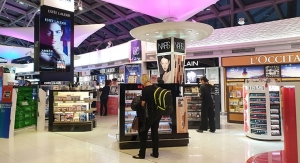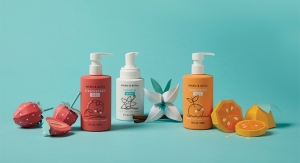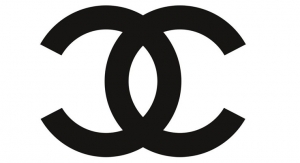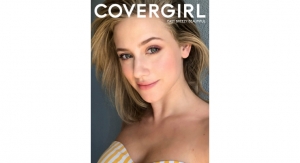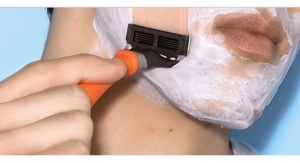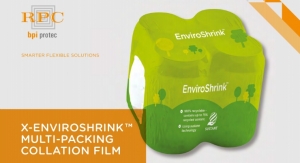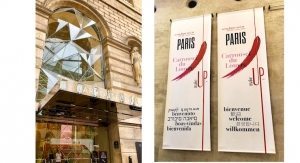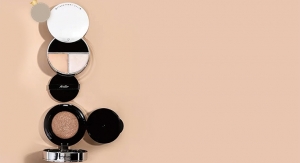Bajeerah LaCava, Contributing Writer12.10.19
Men have been using gender-specific products for decades when it comes to shaving, shampoo and deodorant. While that segment continues to experience steady growth, a pattern Orbis Research’s Global Men’s Grooming Products Market Report predicts will continue through 2025, men are expanding what they are looking for and companies are growing and changing their product lines to meet the increasing demand.
Euromonitor International’s research also shows increased growth in the market and found that retailers are expanding their men’s grooming sections, larger companies are acquiring smaller ones in the men’s market to expand their portfolios and smaller brands are launching new products to meet the demands of consumers.
Entrepreneurial Spirit
In New York City, entrepreneur Chad Beightol witnessed the increased demand in his own retail shop, The Lodge, where he focused on accessories for men. Approximately two years ago, he launched his own brand, The Man Shop, first focusing on fragrances and later expanding the line to include beard care and skincare. Then, in the spring of 2019, he opened CONSIGLIERE, a men’s beauty retailer with both an online store and a retail space.
“I realized that there were very few places for guys to go and get in-person advice and try products out. The beauty-focused specialty retailers like Sephora, Ulta, Blue Mercury were doing a fantastic job serving women, but they didn’t do as well of a job taking care of men’s needs. Mass retailers and drugstores often have a broad selection of products, but you go in there and you’re on your own. No advice, no product to try out. Just guesswork. We give advice on every grooming need, we’ve vetted our products thoroughly, and everything has a tester so you can know on-the-spot how something will work for you,” Beightol says.
The Man Shop’s beard balms, with fun, creative names based on the scents such as Mane Squeeze and Bae, have proven to be popular along with the brand’s colognes, according to Beightol. But, he adds, more treatments for the eyes and skin are coming soon.
Providing Self-Care
Larissa Jensen, executive director, beauty industry analyst, The NPD Group—and a member of Beauty Packaging’s Board of Advisors—says that “men’s prestige skincare grew +4 percent over the last year, with the greatest growth coming from moisturizer and shave-face.” She reports the growth for those products are “+6 percent and +8 percent, respectively.”
Julie Vergnion, category manager skincare division, Quadpack Industries, explains the growth is coming as male consumers change their views. “New generations of male consumers embrace beauty as part of their daily routine, way beyond moisturizing after shaving. There is a general tendency among men towards greater self-care,” she says.
Chiara Badavelli, marketing manager, Premi Beauty Industries, is seeing similar trends. “I think that in the next years the trend for men’s products will be more for skincare products with high level performance and the segment that will grow more will be the one of luxury/prestige products to buy on specific e-commerce beauty shops,” she says.
Dr. Max Pharma’s new Nuance line for men is just one example. It includes a daily energizing gel, a night cream and aftershave, products packaged in 50ml Airglass from Premi Beauty Industries.
WHEN BEAUTY! is also looking to meet the demands from men with its new SUPER WHEN for MEN line. The products, which include a three-step skincare routine, are described by the company as the “first ever line developed to address common skin-aggressors for men such as micro dust, environmental stress and pollution, frequent shaving, sebum and sweat.”
Jin Han Lee, founder, WHEN BEAUTY!, says he has been seeing the demand for men’s products growing faster than the same category for women. “Men are becoming more aware of the different skincare and hair products as grooming needs have increased (a popular trend is now to have beards or some type of facial hair); social media posts of good looking people (on Instagram, Pinterest, YouTube, etc.) and apps like the ‘aging app’ to show what you will look like when you are older, are motivating more men to take care of their skin and body,” Lee says.
Gender-Neutral Options
The impact of social media on sales and growth of certain segments is especially prevalent among Millennials, who have an increasing interest in gender-neutral products.
“Thanks to YouTubers and bloggers, the concept of genderless makeup started to become popular. Iconic brands such as CoverGirl signed up male models for their campaigns,” says Sonia Cerato, category manager makeup division, Quadpack.
Vergnion adds, “Gender-neutral is the future. The lines are being blurred and the market is becoming more inclusive than ever. A case in point is Chanel’s appointment of transgender model Teddy Quinlivan. More brands will follow in that direction, targeting consumers not by gender but by personality.”
Vergnion also points to the packaging Quadpack recently designed for Cult Care as an example. The new unisex pro-biotic face cream is housed in a 60ml glass jar and features an engraved cap made of sustainably sourced ash.
Takuya Noguchi, CEO of BULK HOMME, a Japanese men’s skincare brand agrees there are changes happening. Noguchi, a Millennial himself, launched his line in 2013 at the age of 24. “I feel that men’s aesthetics are improving all over the world with the facts of increasing fitness orientation as a global trend, borderless gender and culture, and the spread of SNS [social networking service],” he says.
BULK HOMME primarily offers products packaged in a pouch design and recently announced it will be adding products in February 2020 featuring onsen hot spring water and fruit extracts. It also announced that it will be expanding from Japan, South Korea and Taiwan and into the European market next year.
Another area of growth where the gender lines are becoming more blurred is the use of ingredients such as cannabidiols (CBD) in men’s products, much in the same way it has already been used in women’s products, reports Marny Bielefeldt, vice president of marketing, Alpha Packaging. “Hemp-based CBD will show up in pain relief products, energy supplements and topical lotions that will be available in men’s products at mainstream retailers,” she says.
While many of those types of products are light-sensitive and require darker plastic bottles and jars, there is still a strong desire for clear bottles, Bielefeldt adds. “We also see sustainability becoming more important to male consumers, and that extends to the packaging. There is a lot of interest in 100% post-consumer (recycled) plastic packaging, and some brand owners are moving away from dark plastic bottles to clear bottles, which recyclers prefer over colored bottles,” she explains.
Packaging Matters
The desire for more traditional masculine packaging is also still prevalent, particularly when it comes to customers from Generation X, says Isabelle de Maistre, category manager fragrance division, Quadpack.
One example, she says, is the packaging Quadpack recently produced for Giorgio Armani Acqua di Gio Absolu Instinct, which includes a finely engraved and stained cap made of wood from sustainably managed forests.
Mike Cabanski, sales director, beauty and personal care, Berry Global, also has seen the market remain strong for gender-specific packaging.
“Men are looking for a visual cue so they know this is ‘their’ product. Masculine colors, design, graphics and finishes, as well as distinctive shapes, help communicate this message. At Berry, we have seen brands use spirits style bottles, like flasks or 50ml bottles, to connote that barbershop, uber-masculine effect,” he says.
One of Berry’s customers, Dollar Shave Club, which sells razors and other grooming products online, uses super matte and glossy finishes along with silk screened graphics, “distinctive colors, design and finishes to reinforce their brand and positioning,” explains Cabanski.
For his The Man Shop line, Beightol went with a combination of black and blue and created the branding, labeling and packaging around that for all of his products. “We chose the fonts we use because they felt masculine to me and are a bit fun. So much modern branding today is hyper minimal, almost always the same lowercase, sans-serif font. I think that’s a trend and I’m looking for something that is long-term,” Beightol says.
Bielefeldt too finds clear messages on packaging for men to be essential. “Men look for something that clearly identifies what the product and the benefits are, which is why you see a lot of simple typography and color-coded labeling to differentiate between attributes. For example, a brand may use blue type on black bottles for all its products that increase hair thickness, while sculpting products from the same product line might use green type on the same black bottle,” she explains.
Functional Qualities
But Dollar Shave Club brand manager Katie Caswell and vice president of product development John Milligan add that above all else their male customers are looking for function.
“We’ve found that our guys really appreciate packaging that dispenses product easily whether it is on their shower shelf at home, or on-the-go. Our members love packaging that both indicates how much to use per dose and lets them use every last bit of product. If our product or pack doesn’t perform, then our guys will just not buy into cool looks or unnecessary features,” Caswell says.
Euromonitor International’s research also shows increased growth in the market and found that retailers are expanding their men’s grooming sections, larger companies are acquiring smaller ones in the men’s market to expand their portfolios and smaller brands are launching new products to meet the demands of consumers.
Entrepreneurial Spirit
In New York City, entrepreneur Chad Beightol witnessed the increased demand in his own retail shop, The Lodge, where he focused on accessories for men. Approximately two years ago, he launched his own brand, The Man Shop, first focusing on fragrances and later expanding the line to include beard care and skincare. Then, in the spring of 2019, he opened CONSIGLIERE, a men’s beauty retailer with both an online store and a retail space.
“I realized that there were very few places for guys to go and get in-person advice and try products out. The beauty-focused specialty retailers like Sephora, Ulta, Blue Mercury were doing a fantastic job serving women, but they didn’t do as well of a job taking care of men’s needs. Mass retailers and drugstores often have a broad selection of products, but you go in there and you’re on your own. No advice, no product to try out. Just guesswork. We give advice on every grooming need, we’ve vetted our products thoroughly, and everything has a tester so you can know on-the-spot how something will work for you,” Beightol says.
The Man Shop’s beard balms, with fun, creative names based on the scents such as Mane Squeeze and Bae, have proven to be popular along with the brand’s colognes, according to Beightol. But, he adds, more treatments for the eyes and skin are coming soon.
Providing Self-Care
Larissa Jensen, executive director, beauty industry analyst, The NPD Group—and a member of Beauty Packaging’s Board of Advisors—says that “men’s prestige skincare grew +4 percent over the last year, with the greatest growth coming from moisturizer and shave-face.” She reports the growth for those products are “+6 percent and +8 percent, respectively.”
Julie Vergnion, category manager skincare division, Quadpack Industries, explains the growth is coming as male consumers change their views. “New generations of male consumers embrace beauty as part of their daily routine, way beyond moisturizing after shaving. There is a general tendency among men towards greater self-care,” she says.
Chiara Badavelli, marketing manager, Premi Beauty Industries, is seeing similar trends. “I think that in the next years the trend for men’s products will be more for skincare products with high level performance and the segment that will grow more will be the one of luxury/prestige products to buy on specific e-commerce beauty shops,” she says.
Dr. Max Pharma’s new Nuance line for men is just one example. It includes a daily energizing gel, a night cream and aftershave, products packaged in 50ml Airglass from Premi Beauty Industries.
WHEN BEAUTY! is also looking to meet the demands from men with its new SUPER WHEN for MEN line. The products, which include a three-step skincare routine, are described by the company as the “first ever line developed to address common skin-aggressors for men such as micro dust, environmental stress and pollution, frequent shaving, sebum and sweat.”
Jin Han Lee, founder, WHEN BEAUTY!, says he has been seeing the demand for men’s products growing faster than the same category for women. “Men are becoming more aware of the different skincare and hair products as grooming needs have increased (a popular trend is now to have beards or some type of facial hair); social media posts of good looking people (on Instagram, Pinterest, YouTube, etc.) and apps like the ‘aging app’ to show what you will look like when you are older, are motivating more men to take care of their skin and body,” Lee says.
Gender-Neutral Options
The impact of social media on sales and growth of certain segments is especially prevalent among Millennials, who have an increasing interest in gender-neutral products.
“Thanks to YouTubers and bloggers, the concept of genderless makeup started to become popular. Iconic brands such as CoverGirl signed up male models for their campaigns,” says Sonia Cerato, category manager makeup division, Quadpack.
Vergnion adds, “Gender-neutral is the future. The lines are being blurred and the market is becoming more inclusive than ever. A case in point is Chanel’s appointment of transgender model Teddy Quinlivan. More brands will follow in that direction, targeting consumers not by gender but by personality.”
Vergnion also points to the packaging Quadpack recently designed for Cult Care as an example. The new unisex pro-biotic face cream is housed in a 60ml glass jar and features an engraved cap made of sustainably sourced ash.
Takuya Noguchi, CEO of BULK HOMME, a Japanese men’s skincare brand agrees there are changes happening. Noguchi, a Millennial himself, launched his line in 2013 at the age of 24. “I feel that men’s aesthetics are improving all over the world with the facts of increasing fitness orientation as a global trend, borderless gender and culture, and the spread of SNS [social networking service],” he says.
BULK HOMME primarily offers products packaged in a pouch design and recently announced it will be adding products in February 2020 featuring onsen hot spring water and fruit extracts. It also announced that it will be expanding from Japan, South Korea and Taiwan and into the European market next year.
Another area of growth where the gender lines are becoming more blurred is the use of ingredients such as cannabidiols (CBD) in men’s products, much in the same way it has already been used in women’s products, reports Marny Bielefeldt, vice president of marketing, Alpha Packaging. “Hemp-based CBD will show up in pain relief products, energy supplements and topical lotions that will be available in men’s products at mainstream retailers,” she says.
While many of those types of products are light-sensitive and require darker plastic bottles and jars, there is still a strong desire for clear bottles, Bielefeldt adds. “We also see sustainability becoming more important to male consumers, and that extends to the packaging. There is a lot of interest in 100% post-consumer (recycled) plastic packaging, and some brand owners are moving away from dark plastic bottles to clear bottles, which recyclers prefer over colored bottles,” she explains.
Packaging Matters
The desire for more traditional masculine packaging is also still prevalent, particularly when it comes to customers from Generation X, says Isabelle de Maistre, category manager fragrance division, Quadpack.
One example, she says, is the packaging Quadpack recently produced for Giorgio Armani Acqua di Gio Absolu Instinct, which includes a finely engraved and stained cap made of wood from sustainably managed forests.
Mike Cabanski, sales director, beauty and personal care, Berry Global, also has seen the market remain strong for gender-specific packaging.
“Men are looking for a visual cue so they know this is ‘their’ product. Masculine colors, design, graphics and finishes, as well as distinctive shapes, help communicate this message. At Berry, we have seen brands use spirits style bottles, like flasks or 50ml bottles, to connote that barbershop, uber-masculine effect,” he says.
One of Berry’s customers, Dollar Shave Club, which sells razors and other grooming products online, uses super matte and glossy finishes along with silk screened graphics, “distinctive colors, design and finishes to reinforce their brand and positioning,” explains Cabanski.
For his The Man Shop line, Beightol went with a combination of black and blue and created the branding, labeling and packaging around that for all of his products. “We chose the fonts we use because they felt masculine to me and are a bit fun. So much modern branding today is hyper minimal, almost always the same lowercase, sans-serif font. I think that’s a trend and I’m looking for something that is long-term,” Beightol says.
Bielefeldt too finds clear messages on packaging for men to be essential. “Men look for something that clearly identifies what the product and the benefits are, which is why you see a lot of simple typography and color-coded labeling to differentiate between attributes. For example, a brand may use blue type on black bottles for all its products that increase hair thickness, while sculpting products from the same product line might use green type on the same black bottle,” she explains.
Functional Qualities
But Dollar Shave Club brand manager Katie Caswell and vice president of product development John Milligan add that above all else their male customers are looking for function.
“We’ve found that our guys really appreciate packaging that dispenses product easily whether it is on their shower shelf at home, or on-the-go. Our members love packaging that both indicates how much to use per dose and lets them use every last bit of product. If our product or pack doesn’t perform, then our guys will just not buy into cool looks or unnecessary features,” Caswell says.

